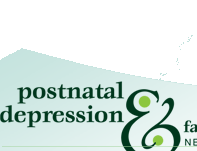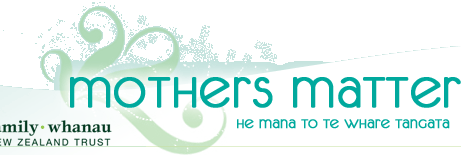

Commonly Asked Medication Questions
This section is written for medical professionals.
DISCLAIMER. The information and advice found on this website aims to reflect current medical knowledge and practice. However, this is not a substitute for clinical judgement and individual medical advice. The website authors accept no responsibility for any consequences arising for relying upon the information contained on this website.
Which SSRI antidepressant has the lowest excretion
into breast milk?
Fluoxetine > Citalopram > Paroxetine > Sertraline.
Significantly more fluoxetine is excreted into breast milk in comparison to the others. Also it has a much longer half life and therefore the potential to accumulate in the infant. Paroxetine is considered to be the safest medication for breast feeding mothers but has been less favourable in pregnancy. To avoid changing medications many perinatal psychiatrists prefer citalopram if medication is needed in both pregnancy and after delivery.
Which is the safest SSRI for use in pregnancy?
In NZ the three SSRIs which are readily available/fully subsidised are citalopram, fluoxetine and paroxetine. There is no clear evidence that any one is safer than the other with regard to use in the first trimester and risk of malformations. However, most perinatal psychiatrists currently would choose citalopram over fluoxetine or paroxetine. The advantage of citalopram over paroxetine and, to a lesser extent, is its better safety profile with regard to neonatal adaptation syndrome. If a woman needs medication in pregnancy then it is likely that it will need to be continued into the postpartum period.The advantage of citalopram over fluoxetine is its better safety profile in breast feeding.
What if a woman presents in the first trimester on
paroxetine?
As recently as early 2008 we would have recommended a change to another antidepressant. However a recent study (see paroxetine, reference 16) of 3,700 women did not find an increase in cardiovascular defects, therefore we would now recommend continuation of paroxetine. Discontinuation of any antidepressant medication is associated with a high (nearly 70%) risk of relapse.
If a woman has had previous PND should I recommend
‘prophylactic’ antidepressants in future pregnancies
or postpartum?
This depends on risk: benefit ratio which will differ from one patient to the next. Clearly the seriousness and consequences of previous episodes are important.
Take a careful history to clarify whether during the previous episode significant symptoms began during pregnancy or not until the postpartum period. If the later then it is best to avoid prophylactic medication during pregnancy. This woman would still need careful monitoring in pregnancy and generally one would have a higher threshold for commencing medication in pregnancy if she develops symptoms
Consideration of prophylactic medication is very sensible in both pregnancy and postpartum. Careful monitoring of these women is very important. Medication is often recommended in the postpartum period when the risk is often high for having a recurrence of her PND.
Do I need to increase an antidepressant in the third
trimester if the woman is doing fine?
No, not if she is keeping well. Although the plasma levels of antidepressant medications do fall in the third trimester many women do not relapse and by not increasing the dose it is effectively tapering the dose. If she does relapse however then it may be advisable to increase the dose (though probably best to avoid it if she is over 39 weeks gestation).
Should antidepressants in pregnancy be stopped before
delivery to reduce the effect on the baby?
Not necessarily although many perinatal psychiatrists would recommend a reduction in dose to minimise the effects on the neonate. Also not increasing the dose is effectively reducing plasma concentrations.
It is very difficult to predict when delivery will occur. Withdrawal should occur earlier for medications with a long half life like fluoxetine (begin about 2 weeks before expected date of delivery) and a bit later for citalopram and paroxetine (1 week before expected date of delivery). See also sections on each of these medications, particularly for discussion of persistent pulmonary hypertension in the newborn.
Why do psychiatrists take some women, but not others,
off SSRIs before delivery?
This depends on the wishes of the woman and her partner, the severity of her illness and individual variations between psychiatrists.
If there is very high risk of relapse with withdrawal of the SSRI, then it is likely that a psychiatrist would probably recommend continuing medication and for the newborn to have a paediatric assessment. The aim of stopping medication before delivery is to minimise the risk of neonatal adaptation syndrome. Reducing the dose of the medication will also reduce the risk of this.
What blood tests are recommended before starting
antidepressants in pregnancy and postpartum?
Full blood screen, urea and electrolytes, liver function tests and thyroid function tests (with thyroid antibodies if they are abnormal). These tests can be more difficult to interpret in pregnancy.
Mild abnormalities of thyroid function (assuming TSH is normal) in the postpartum should be repeated after a few weeks and at that stage accompanied by thyroid antibodies.
Does the time the mother takes medication matter
in terms of peak plasma levels and breast feeding?
Probably not significantly. However they may prefer to feed at the time of taking medication and to avoid feeding in 1-3 hours post dose as this may theoretically reduce the infant exposure slightly.
Is it safe to use benzodiazepines in breastfeeding?
What about sleeping tablets?
Benzodiazepines are considered to be safe in breast feeding if the dose is equivalent to 20mg diazepam or less (see medications - benzodiazepines for a table of relative doses, risk categories and half-lives). Also those with short or medium half life are generally preferred to those with long half life because there is less risk of accumulation. Most are categorised as L3 for acute use and L4 for chronic use.
Zopiclone is category L2.
Remember; It is not safe for a mother to be heavily sedated and caring for a baby on her own.
Is it safe to use benzodiazepines in pregnancy?
Most benzodiazepines are Category C, D or X. Ongoing use is to be avoided but the occasional use is unlikely to cause harm (see also Benzodiazepines)
Is alprazolam safe to use?
Alprazolam or Xanax has the same characteristics as other benzodiazepines as far as pregnancy and breast feeding is concerned. It is Category D for pregnancy. In breast feeding it is L3 for acute use and L4 for chronic use. 0.5mg of alprazolam is equivalent to 10mg of diazepam (see also Benzodiazepines).
If a woman with a history of PND or depression, has a
miscarriage or termination is she at risk of depression?
Yes, particularly if she has had both.
She and her partner should be advised to keep an eye out for early warning signs of relapse. It is important to recognise that many people are not good at recognising or accepting signs of relapse. For this reason it is important to schedule follow-up post miscarriage or termination appointments in advance to try and encourage her attendance. If relapse occurs then it is best to commence medication promptly.
What is the safest mood stabiliser in early pregnancy?
We’re not sure but it now seems that with both lithium and lamotrigine the risk of congenital malformations is less than for carbamazepine and very significantly less than for sodium valproate.
If possible all women of child bearing age on an antiepileptic medication should be prescribed folic acid 5mg daily. Pregnancy ideally should be diagnosed as early as possible (use blood tests) and the dose of medication kept to the lowest possible dose. Women with bipolar disorder are advised to see a perinatal psychiatrist for consultation prior to getting pregnant. Medication should not be stopped abruptly.
Is there a ‘safe’ dose for the mood stabilisers in
pregnancy?
For the mother the safest dose is the lowest possible dose that keeps her well. For the infant, however, the dose has a significant effect on the risk of congenital malformations; the risk of malformation increases with the dose of medication used and also with the number of medications used concurrently.
Doses of sodium valproate higher than 1,000mg per day are of particular concern as the rates for congenital malformations may be up to 30% (Vadja et al., 2004). Lower doses seem to be much safer for the infant. (See section on individual medications)
Should mood stabilisers be stopped if a woman
becomes pregnant?
Not suddenly and not necessarily: often it is better to continue the medication rather than risk a serious relapse but this depends on weighing the risks of relapse against the risks to the foetus, along with the informed wishes of the woman and her partner. A specialist opinion is advised.
.
|






